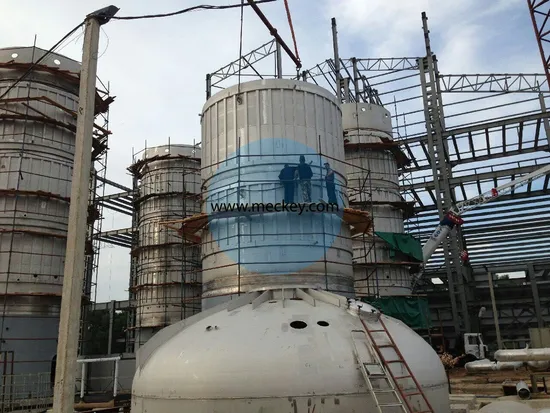
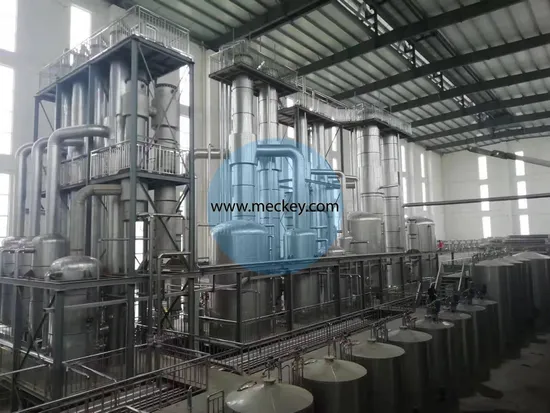
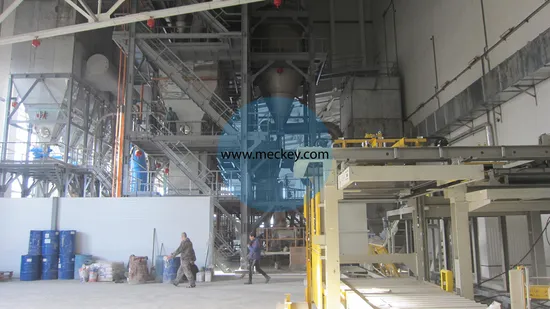

Preview
基本信息产品详情证书
基本信息
| 型号编号 | MKLS |
| 定制的 | 定制的 |
| 认证 | CE,ISO9001 |
| 电源 | 电的 |
| 自动评分 | 半自动 |
| 原材料 | 淀粉、葡萄糖或糖蜜 |
| 产品名称 | 赖氨酸生产线设备 |
| 设备名称 | 赖氨酸发酵设备 |
| 进程 | 发酵 |
| 最终产品 | 硫酸赖氨酸或氯化物 |
| 包括设备 | 发酵罐、膜过滤器、蒸发器 |
| 工人数量 | 每班30-35名工人 |
| 安装时间 | 8至12个月 |
| 容量 | 年产 1 万至 10 万吨 |
| 建设区 | 4000至10000平方米 |
| 关键设备 | 流化床干燥机、过滤压机、结晶器 |
| 运输包 | 裸装或木箱 |
| 规格 | 定制的 |
| 商标 | Mekcey |
| 起源 | 北京 |
| 生产能力 | 每年十集 |
产品详情
Product Description
Preview
Low Waste Starch to Lysine Sulphate Production Line Equipment
Preview
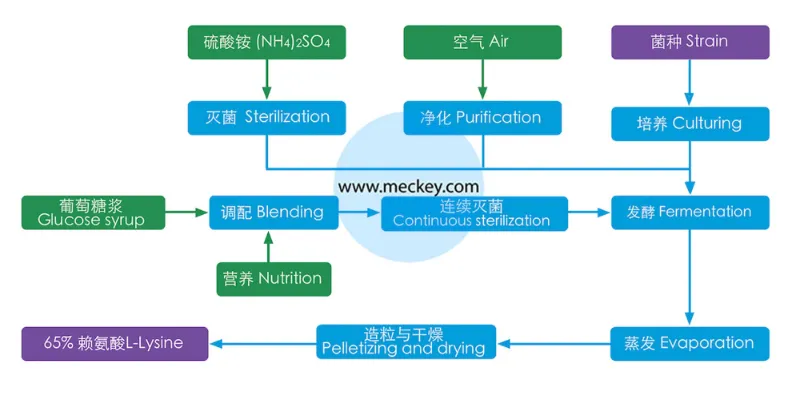
Preview
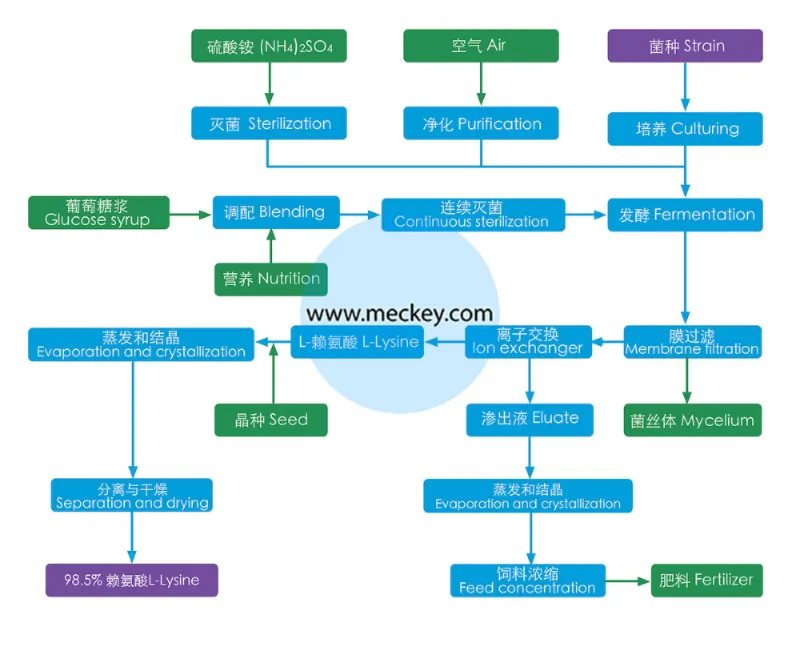
Preview
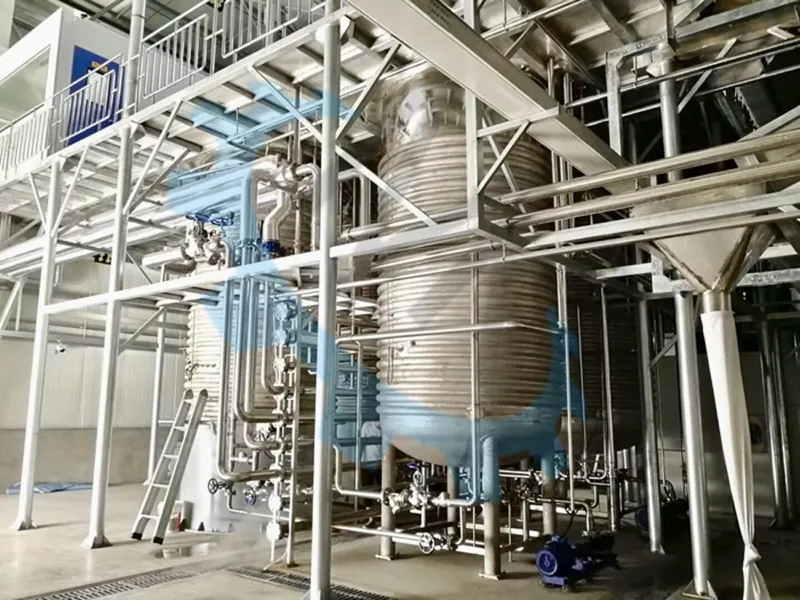
Preview
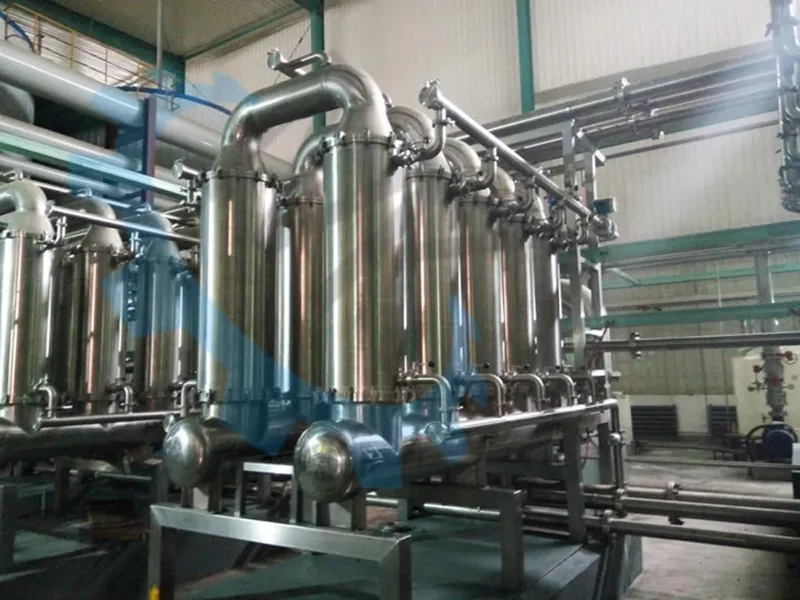
Preview
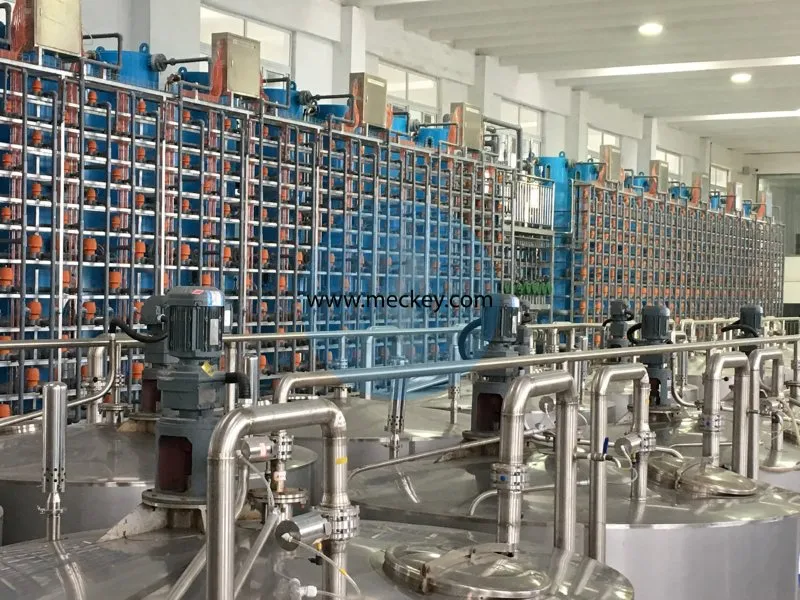
Preview
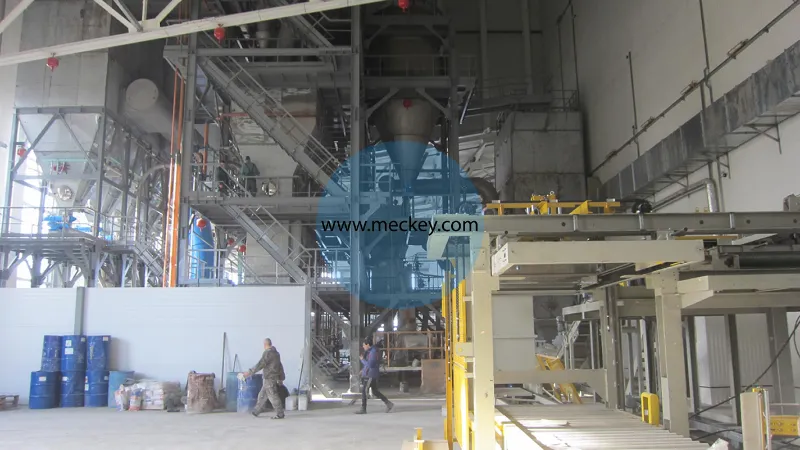
Preview
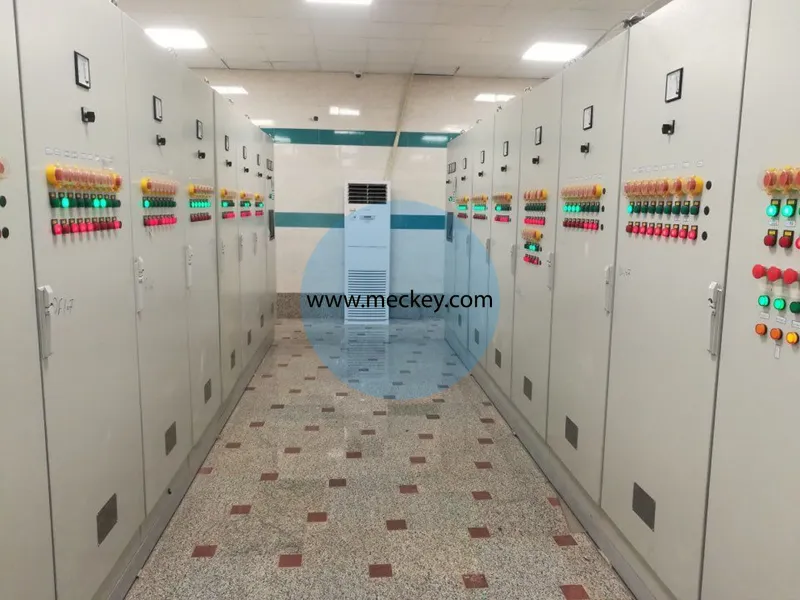
Preview
Lysine is one of the essential amino acids for humans and mammals. The body cannot synthesize itself and must be supplemented from food. Lysine is mainly found in animal foods and legumes, and cereals are low in lysine. Lysine has positive nutritional significance in promoting human growth and development, strengthening the body's immunity, anti-virus, promoting fat oxidation, and alleviating anxiety, etc. At the same time, it can also promote the absorption of certain nutrients and can work in synergy with some nutrients To better play the physiological functions of various nutrients.Process Flow DiagramProcess Description
(1) Material blending: Add auxiliary materials like CSL, molasses, salt, etc. to the glucose. The material is sent to fermentation tanks after continuous sterilization during L-Lysine processing.(2) Air preparation: Raw air must be cleaned via multi-stage filter to ensure the quality of the air to fermentation. Oil-free screw air compressors should be applied.(3) Strain preparation: L-Lysine strain is corynebacterium glutamicum. It is selected and passed 45 hours culturing.(4) Seed preparation: The medium is prepared then sent to flask for further culturing of slant seed. The last culturing happens in seed tank with aid of air and hydrolisate, then it is ready for fermentation.(5) Fermentation: Production of L-Lysine takes place in special fermentors under the condition of aeration, temperature and pH. Sterile glucose syrup and ammonium sulfate solution as well as defoam reagent are added continuously to help.(6) Mycelium separation: L-Lysine solution PH will be adjusted after fermentation. Through micro-filtration, the mycelium will be separated out for making nutrious feed.(7) Decolorization: The L-Lysine solution will be sent to decolor tank in which the active carbon is added. After keeping agitation for 30-40minutes, the foreign color is absorbed by the carbon then the solution is sent to filter for removing dirty carbon.(8) Ion exchange: The solution contains small qty. of positive and negative ions like Fe, Mg, Ca and Cl, SO3, etc., these items will be removed by resins with different functions in ion exchange system. Then the solution is purified.(9) Concentration and crystallization: Concentration of the eluate from ion exchanging system is sent to vacuum evaporator&crystallizer to increase solid content for drying.(10) Separation and drying: Concentrated L-Lysine is sent to separator to get wet crystallized L-Lysine and mother liquid. The mother liquid is partially recycled to improve yield of final product. Unrecoverable mother liquid will mix with mycelium as feed. Then the wet L-Lysine is sent to flash or fluid bed dryer for removing remaining moisture until final requirement.Main EquipmentWelcome to Contact US!
Beijing Meckey Engineering Co.Website: cnmeckey.en.made-in-china.com
Add: Bldg.5-1511, No. 10 Ronghua south road, BDA, Beijing
(1) Material blending: Add auxiliary materials like CSL, molasses, salt, etc. to the glucose. The material is sent to fermentation tanks after continuous sterilization during L-Lysine processing.(2) Air preparation: Raw air must be cleaned via multi-stage filter to ensure the quality of the air to fermentation. Oil-free screw air compressors should be applied.(3) Strain preparation: L-Lysine strain is corynebacterium glutamicum. It is selected and passed 45 hours culturing.(4) Seed preparation: The medium is prepared then sent to flask for further culturing of slant seed. The last culturing happens in seed tank with aid of air and hydrolisate, then it is ready for fermentation.(5) Fermentation: Production of L-Lysine takes place in special fermentors under the condition of aeration, temperature and pH. Sterile glucose syrup and ammonium sulfate solution as well as defoam reagent are added continuously to help.(6) Mycelium separation: L-Lysine solution PH will be adjusted after fermentation. Through micro-filtration, the mycelium will be separated out for making nutrious feed.(7) Decolorization: The L-Lysine solution will be sent to decolor tank in which the active carbon is added. After keeping agitation for 30-40minutes, the foreign color is absorbed by the carbon then the solution is sent to filter for removing dirty carbon.(8) Ion exchange: The solution contains small qty. of positive and negative ions like Fe, Mg, Ca and Cl, SO3, etc., these items will be removed by resins with different functions in ion exchange system. Then the solution is purified.(9) Concentration and crystallization: Concentration of the eluate from ion exchanging system is sent to vacuum evaporator&crystallizer to increase solid content for drying.(10) Separation and drying: Concentrated L-Lysine is sent to separator to get wet crystallized L-Lysine and mother liquid. The mother liquid is partially recycled to improve yield of final product. Unrecoverable mother liquid will mix with mycelium as feed. Then the wet L-Lysine is sent to flash or fluid bed dryer for removing remaining moisture until final requirement.Main EquipmentWelcome to Contact US!
Beijing Meckey Engineering Co.Website: cnmeckey.en.made-in-china.com
Add: Bldg.5-1511, No. 10 Ronghua south road, BDA, Beijing
Preview
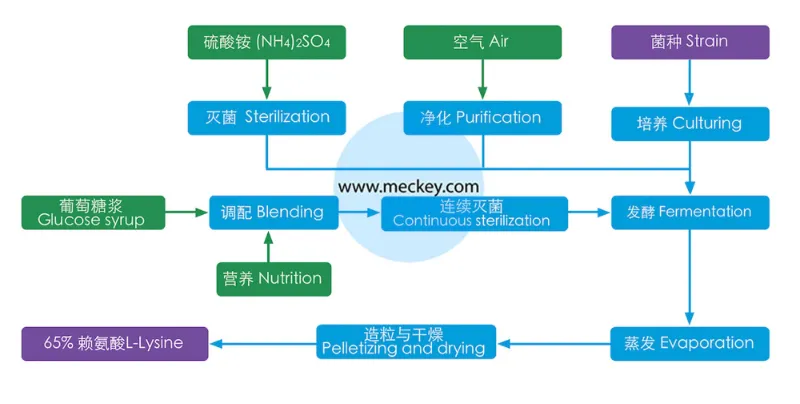
Preview
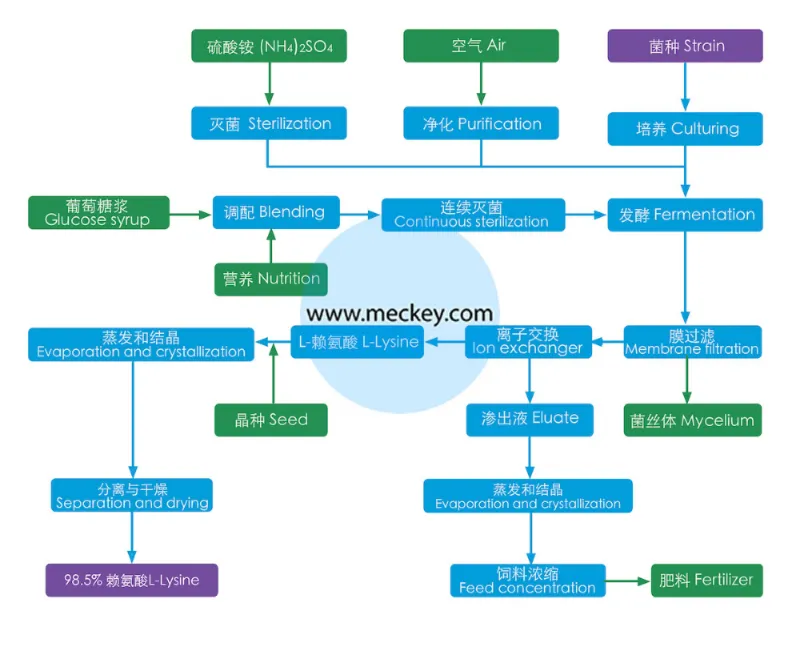
Preview
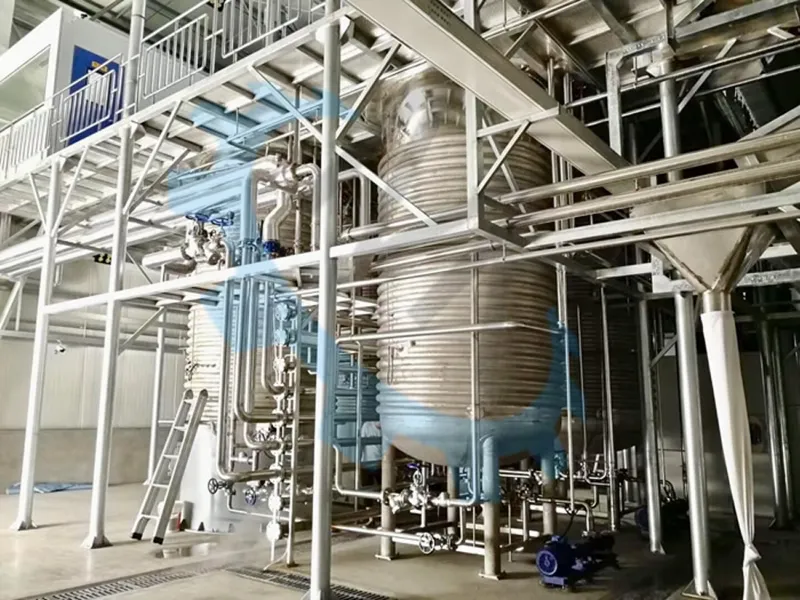
Preview
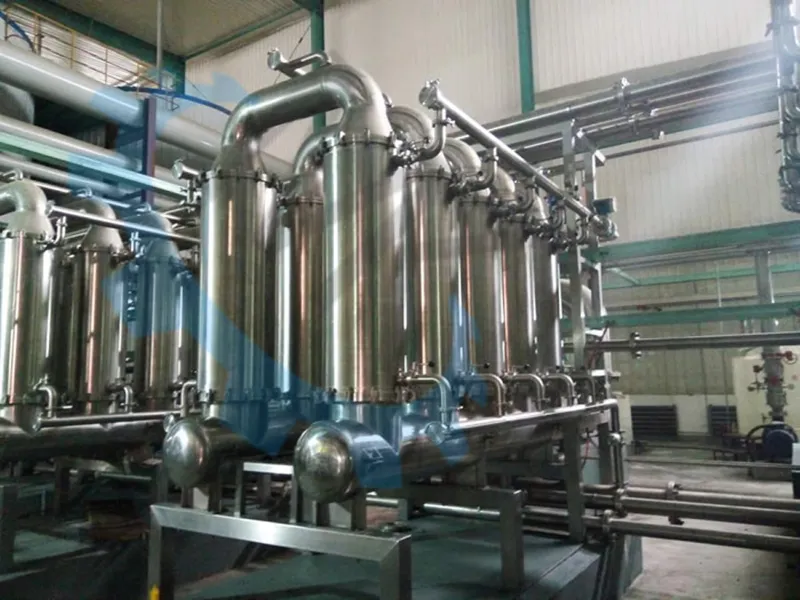
Preview
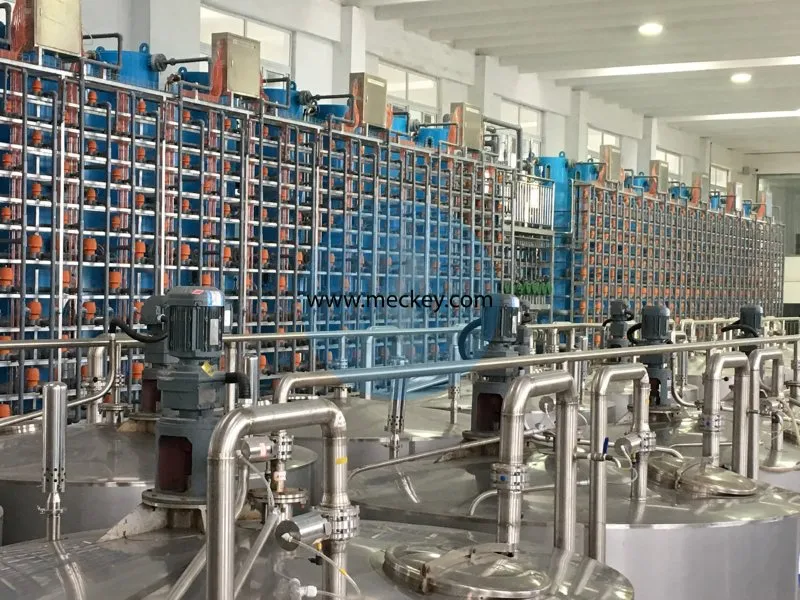
Preview
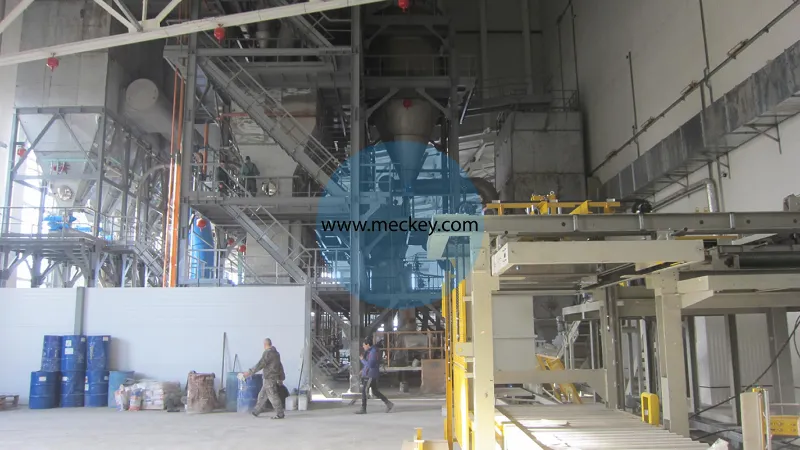
Preview
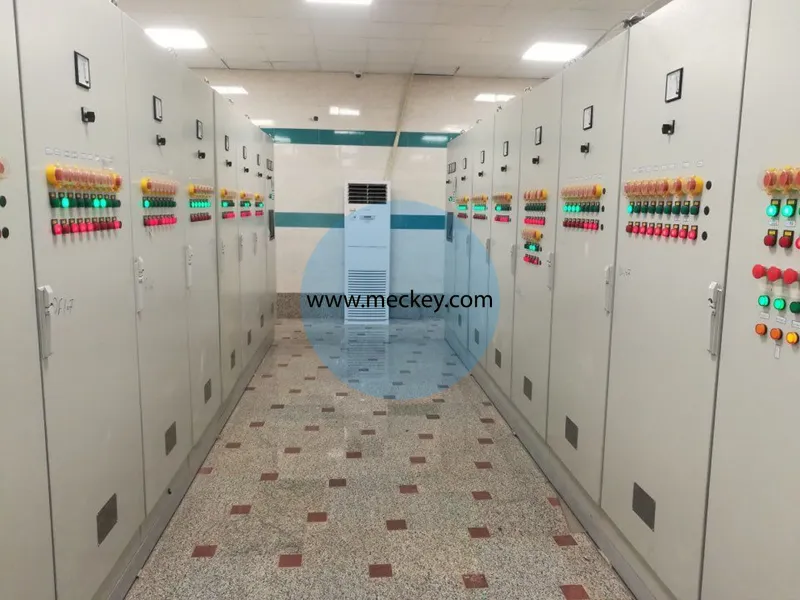
Preview
证书
标题:CE for hydro cyclone

Preview
低浪费淀粉至赖氨酸硫酸盐生产线设备
¥61192480 ~ ¥206868520
化工产业链 · 装配线和生产线 · 食品和饮料及谷物生产线
产地北京
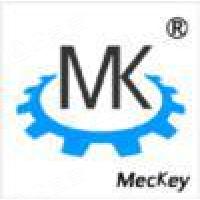

 北京
北京  已认证
已认证
